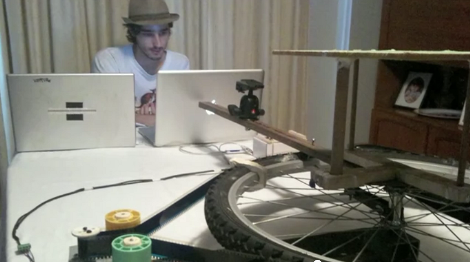[Niklas Roy] is at it again. He’s applying wind power to his projects by using umbrellas. He was inspired by the shape of an anemometer, and umbrellas turned out to be a great choice because they’re cheap and easy to find.
Anemometers measure wind speed by capturing it with egg-shaped sails (in fact, we’ve seen them built from plastic Easter eggs before). The umbrellas have a much larger area and will capture more wind. Still it’s a big jump from measuring wind speed to generating energy. That’s why he’s not trying to generate electricity, but instead using the mechanical force directly. He took a page from one of last year’s projects and used the dual umbrella setup to power a music box, thereby reinventing the wind chime. The triple-umbrella unit seen above serves as a bubble machine, driving a series of plastic rings through a soapy solution and letting the wind do the rest. We’ve embedded his demo video after the break.

















